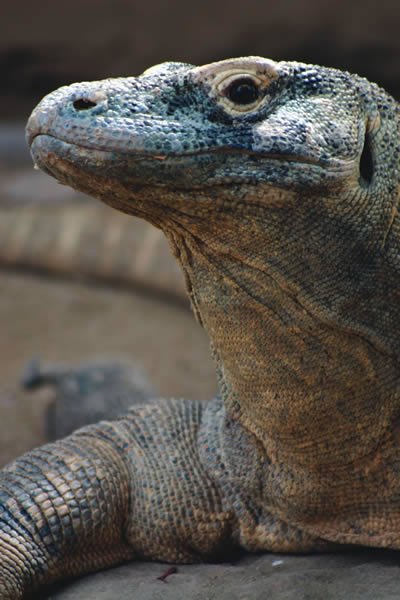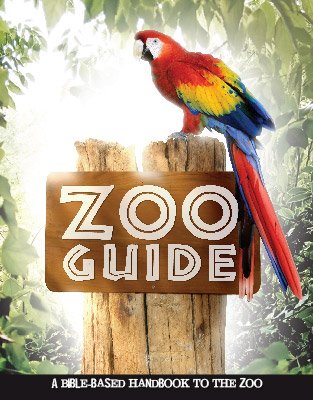Komodo Dragon
Jefri Yunikson Beeh, CC BY-SA 4.0 https://creativecommons.org/licenses/by-sa/4.0, via Wikimedia Commons
It is the world’s largest lizard, out of over 3,000 lizard species. The adult Komodo dragon is mostly green, gray, or black with white or yellow patches.

Design
When young, the Komodo dragon can live in trees where it eats mostly insects and birds. This gives the young protection from other, more aggressive males, which live on the gound. However, when it become older and heavier, it lives on the ground and eats mainly mammals, snakes, and fish. The Komodo dragon has very infectious bacteria in its mouth, which it uses to quickly bring down prey.
Features
- The adult Komodo dragon is mostly green, gray, or black with white or yellow patches. This coloring helps it to be camouflaged in its environment.
- It is the world’s largest lizard, out of over 3,000 lizard species.
- The Komodo has a huge muscular tail.
Fun Facts
- The teeth of the Komodo dragon break easily. However, they are also frequently replaced.
- A pregnant female digs a nest chamber and buries her eggs in the dirt. Once they hatch, they must dig their way to the surface to survive.
Created Kind Members
Monitor lizard
CLASS: Reptilia (reptiles)
ORDER: Squamata (amphisbaenians, lizards, and snakes)
FAMILY: Varanidae (monitor lizards)
GENUS/SPECIES: Varanus komodoensis
Size: Up to 10 ft (3 m)
Weight: 275 lbs (125 kg)
Original Diet: Plants
Present Diet: Mammals, birds, fish, snakes, and other Komodos
Habitat: Forests and savannas, mainly on four Indonesian islands
Zoo Guide
Make your next visit to the zoo more than just fun—make it factual and fascinating too! You could even start a personal “creation zoo tours” ministry. Featuring more than 100 animals, our long-awaited Zoo Guide includes beautiful pictures and explores the amazing facts and design features that point to our awesome Creator. Excellent gift for any one who loves animals!
Browse Kids Book- © 2024 Answers in Genesis
- Privacy Policy
- Contact
- About

